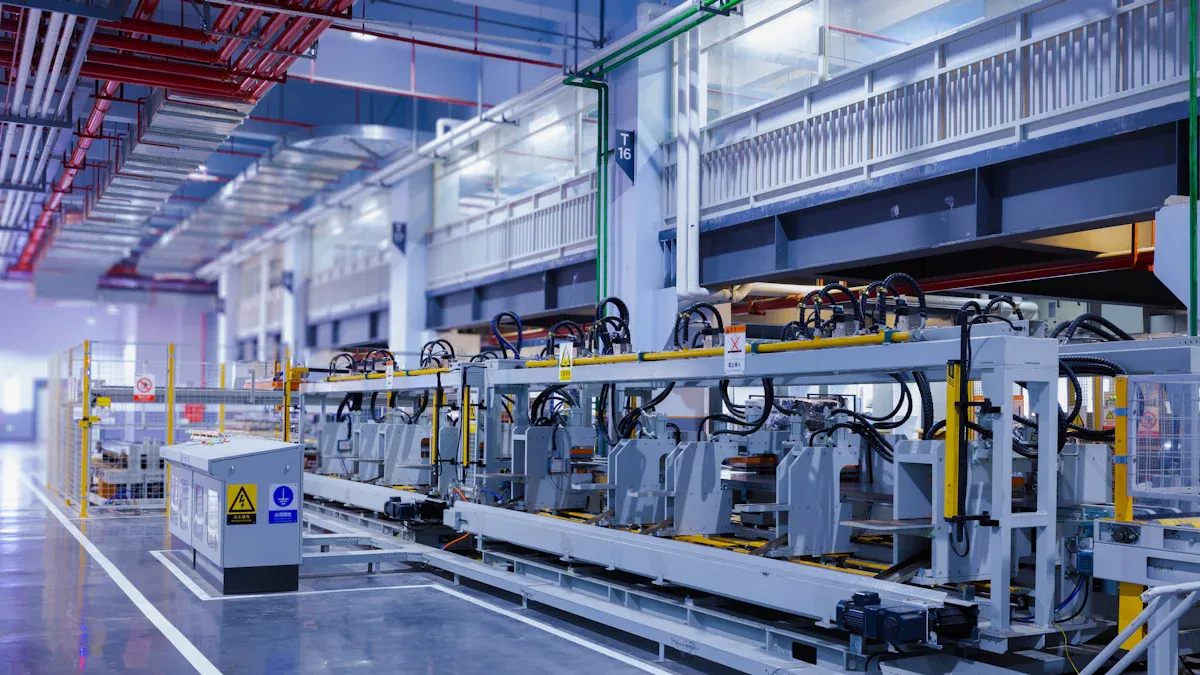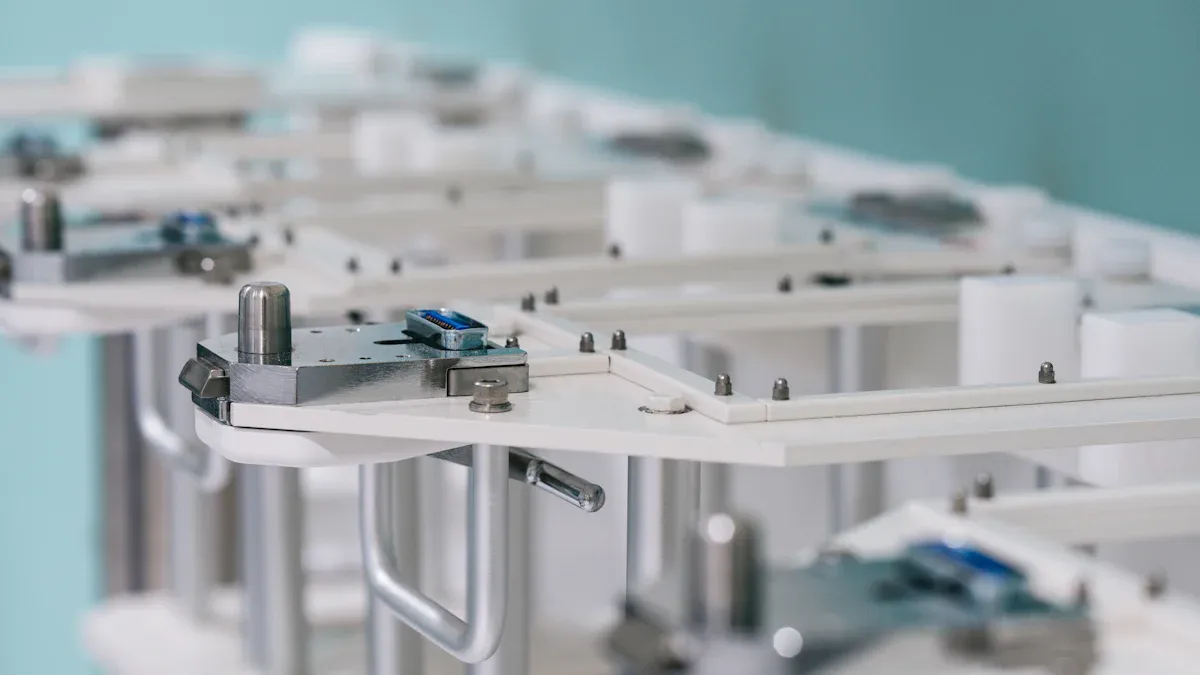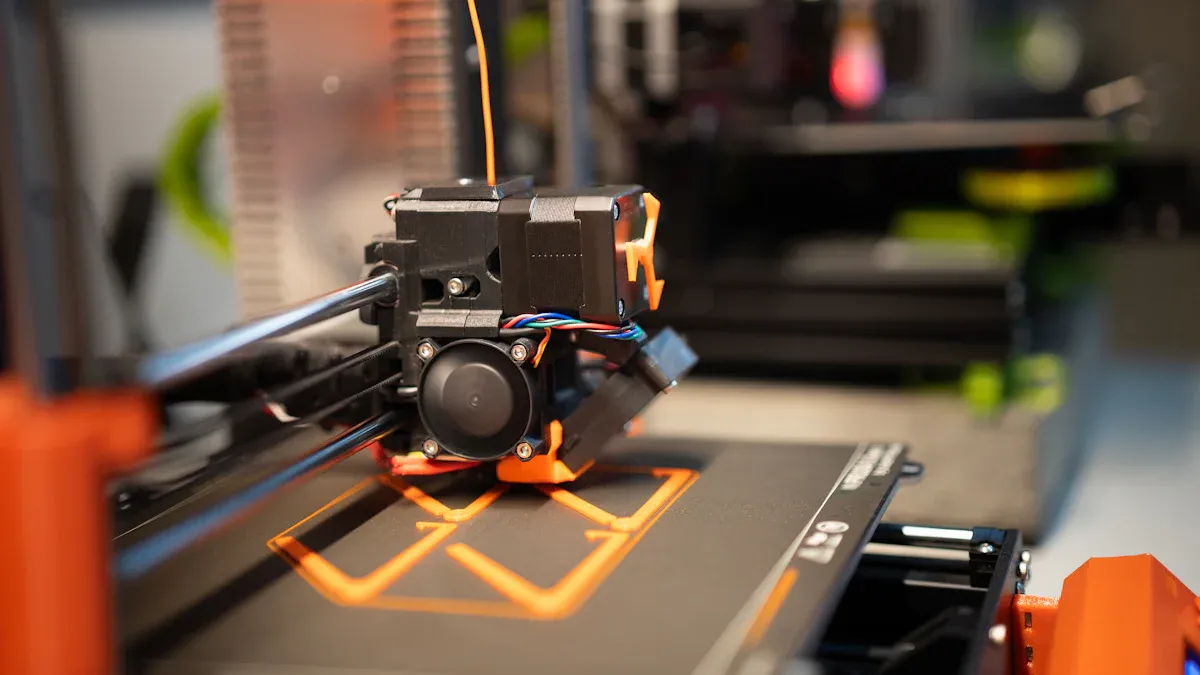
Rapid injection molding helps you shorten the product launch timeline by speeding up production. This process uses advanced technologies like AI to optimize efficiency. Companies now combine rapid methods with innovations such as fiber-based production for cost-effective new product development. These advancements empower faster launches and improved adaptability in competitive markets.
Rapid injection molding is a manufacturing process designed to create plastic parts quickly and efficiently. It uses advanced technologies to produce molds faster than traditional methods, making it ideal for rapid prototyping and new product development. This process is particularly useful for businesses that need to test designs or produce small batches of products without the long lead times associated with conventional injection molding.
The market for rapid injection molding has grown significantly in recent years.
- In 2023, it was valued at approximately USD 3.5 billion.
- By 2032, it is projected to reach USD 7.9 billion, with a growth rate of 9.2% CAGR.
- Industries like automotive and electronics are driving this demand due to their need for fast and cost-effective production solutions.
Rapid injection molding offers several features that enhance its efficiency and precision:
- Quick mold fabrication: This process reduces mold creation time from months to weeks.
- Material waste reduction: It minimizes waste during production, supporting sustainability goals.
- Advanced manufacturing technologies: These improve accuracy and reduce defects.
- Structural integrity: Features like ribs and optimized wall thickness ensure durability without increasing costs.
| Evidence Type | Numerical Value |
|---|---|
| Prototyping Time Reduction | 2-5 weeks vs 2-5 months |
| Production Capacity | Up to 100,000 parts |
| Material Waste Reduction | Minimum waste in injection |
These features make rapid injection molding a preferred choice for businesses aiming to streamline product development and reduce risks.
Rapid injection molding differs from traditional injection molding in several key ways:
- It uses aluminum molds, which are less expensive and faster to produce.
- It focuses on low to medium volume production, making it more cost-effective for smaller runs.
- Traditional injection molding is better suited for high-volume production but requires extensive tooling and setup time.
- Rapid injection molding accelerates production processes, offering faster turnaround times for tight deadlines.
By adopting rapid injection molding, you can achieve greater flexibility and efficiency in prototyping and production, giving your business a competitive edge.

Rapid injection molding significantly reduces the time it takes to bring your product to market. By utilizing advanced technologies and streamlined processes, you can cut down lead times and respond quickly to market demands. This speed gives you a competitive edge, allowing you to launch products faster than your competitors.
Prototype injection molding plays a crucial role in this process. It enhances research and development efficiency, enabling you to test designs and make adjustments quickly. This approach is ideal for companies aiming for rapid market entry and quick customer feedback.
Rapid injection molding offers a cost-effective solution for prototyping and low-volume production. By using softer materials like aluminum for molds, you can reduce machining costs and lead times. This hybrid strategy combines traditional and additive manufacturing, minimizing material waste and labor expenses.
This approach is perfect for new product development, where you need high-quality prototypes without the expense of high-volume production. It allows you to test your designs and validate functionality without committing to large-scale manufacturing.
Rapid injection molding provides unmatched design flexibility. Digital design files allow you to modify tools easily without incurring significant retooling costs. This capability is especially valuable in industries like automotive, aerospace, and consumer electronics, where frequent design changes are common.
With rapid tooling, you can create functional prototypes and make rapid iterations to optimize your design. This process ensures that your final product meets both performance and aesthetic requirements. The ability to iterate quickly reduces the time and cost associated with traditional prototyping methods.
Using rapid injection molding minimizes risks during product development. Prototype molds allow you to identify design flaws early in the process, preventing costly production delays. Real-time monitoring of injection pressure, flow, and temperature ensures that defects like warping or sink marks are detected and corrected promptly.
This proactive approach to risk management helps you avoid potential pitfalls, ensuring a smoother path from prototyping to production. By addressing issues early, you can focus on delivering a reliable and market-ready product.

Rapid prototyping through injection molding allows you to create prototypes that closely resemble the final product. This process ensures that your designs are thoroughly tested and validated before moving to full-scale production. By using rapid prototyping services, you can identify design flaws early, saving time and money in the long run.
Efficient product testing through rapid prototyping reduces the risks of design failures. It enables you to validate concepts and refine your product to meet user needs. Here’s how it benefits your development process:
- Reduces time and costs in product development.
- Enhances the quality of the final product.
- Ensures the product aligns with user expectations.
For example, industries like automotive and aerospace have seen significant lead time reductions—up to 60% and 50%, respectively—when using rapid prototyping for design validation. This proactive approach helps you avoid complications later in the product lifecycle.
| Industry | Lead Time Reduction | Cost Reduction |
|---|---|---|
| Automotive | 60% | 30% |
| Aerospace | 50% | 20% |
Prototype injection molding is an excellent tool for market testing. It allows you to produce small batches of parts using end-use materials, enabling functional testing and customer feedback. This process helps you evaluate your product’s performance and refine it based on real-world data.
Key benefits of prototype injection molding include:
- Cost-effectiveness: A fast and affordable way to test designs.
- Functional testing: Ensures your product works as intended.
- Faster feedback: Provides immediate access to parts for beta testing.
| Benefit | Description |
|---|---|
| Reduces Prototyping Costs | Cost-effective and fast way to make mistakes compared to traditional tooling. |
| Facilitates Functional Testing | Allows testing with end-use materials for true product evaluation. |
| Provides Product Feedback Faster | Enables immediate access to product parts for beta testing and customer feedback. |
This approach accelerates development timelines and lowers tooling costs. It also supports market feedback opportunities, helping you gauge customer reactions before committing to large-scale production.
Bridge tooling serves as a critical step between prototyping and full-scale production. It allows you to produce parts quickly and cost-effectively while scaling your operations. Rapid injection molding plays a pivotal role in this process by using efficient engineering practices and materials like aluminum for molds.
With bridge tooling, you can:
1. Produce high-quality parts faster.
2. Reduce tooling costs, making it easier to scale production.
3. Test and refine designs before committing to expensive production molds.
This method bridges the gap between initial design and mass production, ensuring a smooth transition. It also supports rapid manufacturing, enabling you to meet customer demands without delays.
Rapid injection molding excels in creating customized products for niche markets. Advances in technology have enhanced the complexity and precision of parts, making it easier to meet specific requirements. This process is ideal for industries that demand unique designs and specialized solutions.
The increasing demand for cost-effective manufacturing solutions highlights the importance of customization. Rapid tooling allows you to create intricate designs and make adjustments quickly, ensuring your product meets exact specifications. This flexibility supports innovation and helps you stay competitive in specialized markets.
By leveraging rapid injection molding, you can deliver tailored solutions that cater to unique customer needs. This approach not only enhances customer satisfaction but also opens new opportunities in niche markets.
Rapid injection molding has transformed how consumer products reach the market. Imagine launching a new gadget. You need prototypes that look and function like the final product. Rapid manufacturing enables you to create these prototypes quickly, test them, and refine the design. This process reduces lead times and ensures your product meets customer expectations.
For example, a tech company used rapid injection molding to develop a smart home device. By producing functional prototypes in weeks instead of months, they tested the product with focus groups and adjusted the design based on feedback. This approach allowed them to launch the device ahead of competitors, capturing market share early.
Medical devices require precision and reliability. Rapid injection molding plays a vital role in their development. You can create prototypes that mimic the final product, ensuring functionality and safety. This process helps you test designs and meet regulatory standards without delays.
A medical startup used rapid injection molding to prototype a wearable health monitor. They produced small batches for clinical trials, gathering data to refine the design. Rapid manufacturing allowed them to address issues quickly, ensuring the device met strict medical standards. This streamlined approach accelerated their path to market, benefiting patients sooner.
Successful companies prioritize speed and adaptability. Rapid injection molding helps you achieve both. By using prototype molds, you can test designs, reduce risks, and scale production efficiently. This strategy ensures your product aligns with market demands.
Focus on iterative design. Rapid manufacturing lets you refine your product based on real-world feedback. Use bridge tooling to scale production without committing to expensive molds. These strategies help you stay competitive and deliver high-quality products faster.
Rapid injection molding revolutionizes product development by reducing lead times and enhancing adaptability. Industries like e-commerce and pharmaceuticals drive this growth, with the injection molding market projected to expand by USD 30.65 billion from 2022 to 2027.
By adopting this technology, you can innovate faster, minimize risks, and stay competitive in evolving markets.
A plastic prototype mold is a tool used to create sample parts for testing. It helps you validate designs and ensure they meet quality controls before production.
Rapid injection molding produces functional prototypes quickly. These prototypes allow you to conduct user testing, gather feedback, and refine your product for better market readiness.
Design for manufacturability ensures your product design is optimized for efficient production. Rapid injection molding supports this by enabling quick iterations and testing for manufacturability.